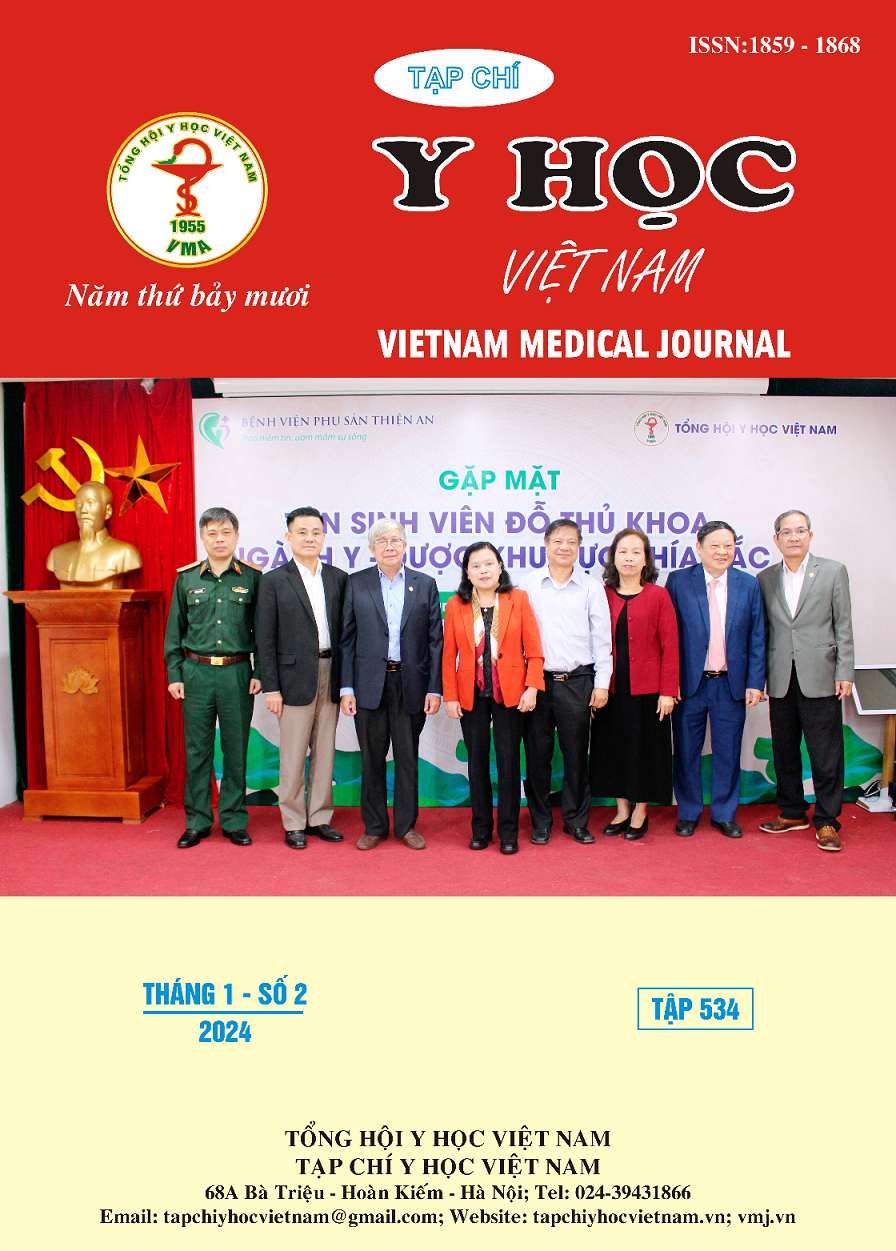TỔNG QUAN HỆ THỐNG VÀ PHÂN TÍCH GỘP VỀ CHỈ SỐ BOLTON ỨNG DỤNG TRONG NẮN CHỈNH RĂNG
Nội dung chính của bài viết
Tóm tắt
Mục tiêu: Mô tả chỉ số Bolton ở khớp cắn bình thường và các sai lệch khớp cắn theo Angle qua tài liệu y văn trên toàn thế giới xuất bản đến 2022. Đối tượng và phương pháp: Tổng quan hệ thống về chỉ số Bolton. Chiến lược tìm kiếm trên các cơ sở dữ liệu điện tử Pubmed, Cochrane, Google Scholar và ScienceDirect (đến hết năm 2022). Số lượng tìm kiếm được là 3523 bài. Sau khi loại bỏ trùng lặp, xét tiêu đề và tóm tắt, 354 bài báo sau đó được đưa vào phân tích toàn văn và sau đó 56 bài báo được đưa lựa chọn vào nghiên cứu và được phân tích gộp. Kết quả: Chỉ số Bolton toàn bộ OR và chỉ số Bolton răng trước AR của nhóm Khớp cắn bình thường lần lượt là 91,74% (KTC 95%: 91,4%-92,1%) và 78,22% (KTC 95%: 77,82% – 78,63%). Đối với sai khớp cắn hạng I, OR và AR lần lượt là 91,7% (KTC 95%: 91,5% - 92,0%) và 78,5% (KTC 95%: 78,1% – 78,9%). Đối với khớp cắn hạng II, OR và AR lần lượt là 91,5% (95% KTC 91,3%-91,7%) và 78,5% (KTC 95%: 78,2% – 78,9%). Đối với khớp cắn hạng III, OR và AR lần lượt là 92,2% (KTC 95%: 91,8%-92,7%) và 78,9% (KTC 95%: 78,3% – 79,4%). Không có sự khác biệt có ý nghĩa thống kê giữa nam và nữ, và giữa các châu lục, ở cả hai giá trị OR và AR ở khớp cắn bình thường cũng như sai lệch khớp cắn. Kết luận: Giá trị OR và AR trung bình ở khớp cắn bình thường đều lớn so với giá trị gốc của Bolton. Các sai lệch khớp cắn theo Angle đều có giá trị OR, AR gần bằng nhau, tuy nhiên trong sai khớp cắn hạng III có OR, AR lớn hơn cả. Giới tính và châu lục hầu hết không có khác biệt trong OR và AR.
Chi tiết bài viết
Tài liệu tham khảo
2. Higgins J.P. and Green S. (2008), "Cochrane handbook for systematic reviews of interventions".
3. Page M.J., McKenzie J.E., Bossuyt P.M., et al. (2021), "The PRISMA 2020 statement: an updated guideline for reporting systematic reviews", International journal of surgery. 88, p. 105906.
4. Lê, N. L. ., & Lê, N. T. . (2023). “Nghiên cứu kích thước độ rộng của răng và sự sai biệt kích thước răng hai hàm theo phân tích Bolton trên sinh viên răng hàm mặt Trường Đại học Y dược Cần Thơ”. Tạp Chí Y học Việt Nam, 524(2).
5. Huỳnh Kim Khang (2011), "Đặc điểm kích thước răng sữa và răng vĩnh viễn trẻ em Việt Nam", Tạp chí Y học Thành phố Hồ Chí Minh, 15(1), tr.265-271.
6. Mishra RK, Kafle D, Gupta R. (2019), "Analysis of Interarch Tooth Size Relationship in Nepalese Subjects with Normal Occlusion and Malocclusions", Int J Dent, pp. 18:2761427.
7. Ashikin A. N., Othman, S. A. (2012), "Comparison of tooth-size discrepancy of three main ethnics in Malaysia with Bolton’s ratio", Sains Malaysiana, 41(2), pp.271-275.


